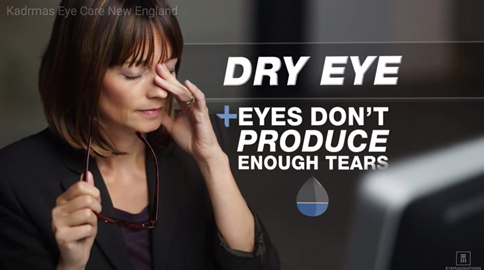In this series, we’ll explore women’s eye health, prevention and safety, and life factors and events that can affect women’s eye health. With this information, we hope you’ll feel empowered to take steps today to prevent future vision problems.
Let’s start by looking at age-related vision problems to which women are subject. Age-Related Vision Problems for Women
According to SeeJaneSee, women make up:
Why do women suffer from more vision problems and incur blindness more than men? The answer is four-fold:
Dry Eye SyndromeIn addition to age-related eye problems, women are more subject to developing dry eye syndrome, a chronic condition that is caused by an insufficient level of protective tear film. As we grow older, the production of tears from our lacrimal (tear) glands may decrease. In addition, inflammation can change the composition of our tears. Either of these factors can cause tears to evaporate, allowing dry spots to form on the cornea, the protective outer layer of our eye. These changes on the surface of the eye can affect signals our eyes send to our brain to make more tears. In some case, the signal is disrupted, blocking the message to create additional tears. In others, too many tears may be produced, causing watery or runny eyes. Although we are secreting more tears, these tears lack the proper composition for them to form tear film that remains on the eye. Those suffering from dry eye syndrome may feel like there’s something in the eye, which can cause irritation that can worsen as the day goes on. As dry eye progresses, eyes may also become inflamed, further compounding the issue. With dry eye, eyes may feel itchy, have a burning sensation, be more sensitive to light, and not tolerate contact lenses for any length of time. Why are women more likely to develop dry eye syndrome than men? Much has to do with hormonal fluctuations caused by birth control, hormone replacement therapy (HRT), pregnancy, and menopause. Also, women are more likely to develop autoimmune diseases such as lupus, rheumatoid arthritis (RA), rosacea, and Sjogren’s syndrome, all of which can lead or contribute to dry eye syndrome. Other risks of developing dry eye syndrome include:
Women who are on birth control or HRT, who are pregnant, going through menopause, or postmenopausal, or have an autoimmune disease should be aware of the symptoms of dry eye and should visit their eye doctor promptly and regularly for proper diagnosis and treatment, which can prevent or minimize loss of vision. Further, healthy lifestyle changes and modifications can help all of us improve eye health and minimize risk of developing dry eye syndrome. Now that we’ve covered many of the eye conditions that affect women and the reasons behind prevalence of eye disease and vision loss in women, in our next post on women’s eye health, we’ll address ways women can address their eye health and vision proactively. If you are concerned about your eye health or vision, your risk factors for developing eye problems or vision loss, or just want to speak and ask questions about your eye health or that of a loved one, please contact us to schedule an appointment with your eye doctor. Comments are closed.
|
EYE HEALTH BLOGCategories
All
Archives
July 2024
|
|
Kadrmas Eye Care New England
55 Commerce Way, Plymouth, MA 02360
14 Tobey Road, Wareham, MA 02571 133 Falmouth Road (Rt 28), Mashpee, MA 02649 |
Phone Number:
1-508-746-8600 Hours: Monday through Friday — 8 AM – 4:30 PM |


 RSS Feed
RSS Feed
